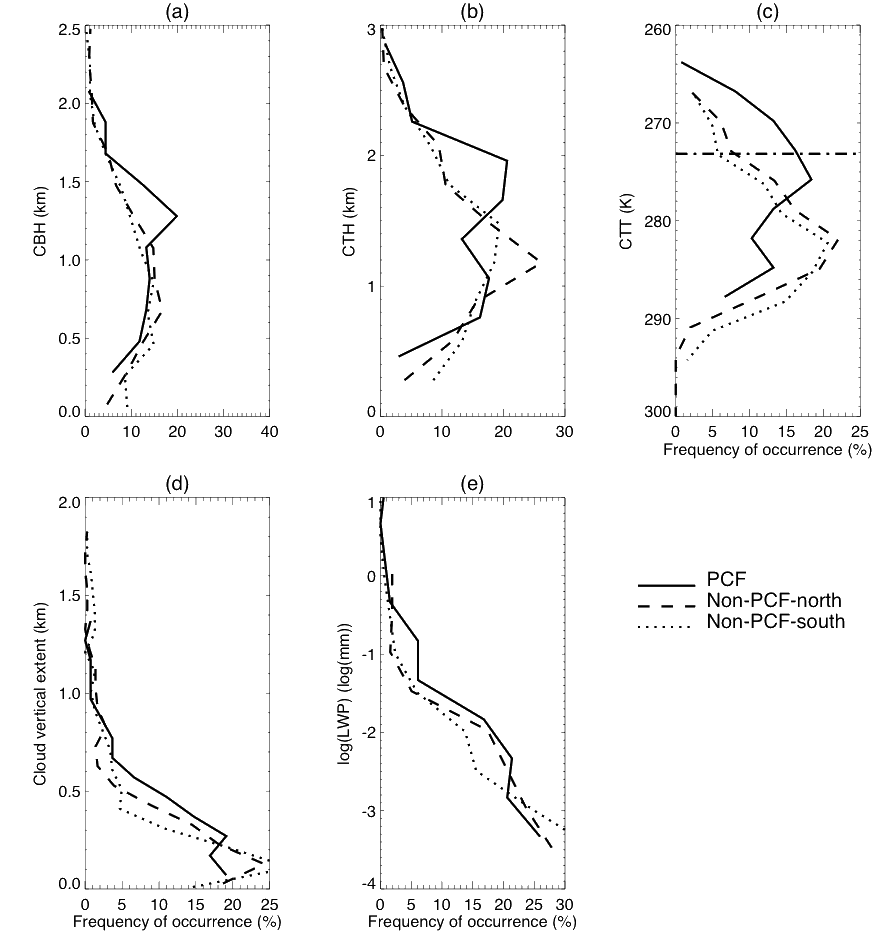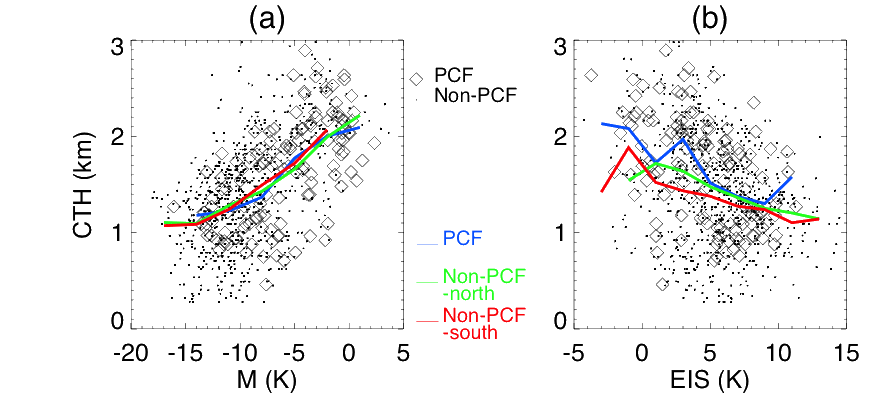Large-scale drivers of low-level cloud macroscopic properties at the ENA site
Submitter:
Naud, Catherine M. — Columbia University
Booth, James — City College of New York
Area of research:
Cloud Distributions/Characterizations
Journal Reference:
Science
Using observations from the ARM Eastern North Atlantic site on Graciosa Island in the Azores, low-level clouds are conditionally sorted according to the prevailing wind direction and presence of a nearby cold front. In conditions of subsidence, cloud base and top heights are found to be strongly related to the strength of the potential temperature contrast between the surface and the 800-hPa level. Post-cold-front conditions exhibit stronger winds and subsidence strength, and a sharper potential temperature contrast. As a result, the post-cold-frontal clouds are higher and thicker than their more quiescent counterparts.
Impact
The results provide a new perspective on how low-level clouds are impacted by the large-scale environment in the midlatitudes. This expands our understanding of the primary drivers of variability in macroscopic characteristics in midlatitude clouds and helps to distinguish these clouds from tropical or subtropical low-level clouds.
Summary
Using cloud and environment observations from the Atmospheric Radiation Measurement user facility's Eastern North Atlantic site and an automated cold front detection routine, cloud properties in post-cold-front (PCF) periods are examined and compared to similar conditions of subsidence (non-PCF). PCF periods exhibit stronger subsidence and wind speed than non-PCF periods, with weaker inversions and stronger surface temperature contrasts. Low-level clouds predominate and are found to have higher cloud-base and top heights, colder cloud-top temperature, and greater vertical extent and liquid water path during PCF than non-PCF periods (Figure 1). The environmental metric that is best correlated with cloud boundaries for both PCF and non-PCF periods is the difference in potential temperature between the sea surface and 800 hPa, referred to as “M” (Figure 2), a parameter used to locate cold air outbreak conditions. However, the cloud vertical extent and liquid water path are found to be better correlated with sea-air temperature contrast, a parameter related to turbulent surface fluxes. The strength of the relationships between the cloud characteristics and these metrics does not differ for PCF and non-PCF periods, but the strength of the metrics differs between PCF and non-PCF periods and can explain cloud property differences. The results suggest both the properties of the boundary layer and the presence of an upper-level cyclone associated with the cold front determine PCF cloud properties.



